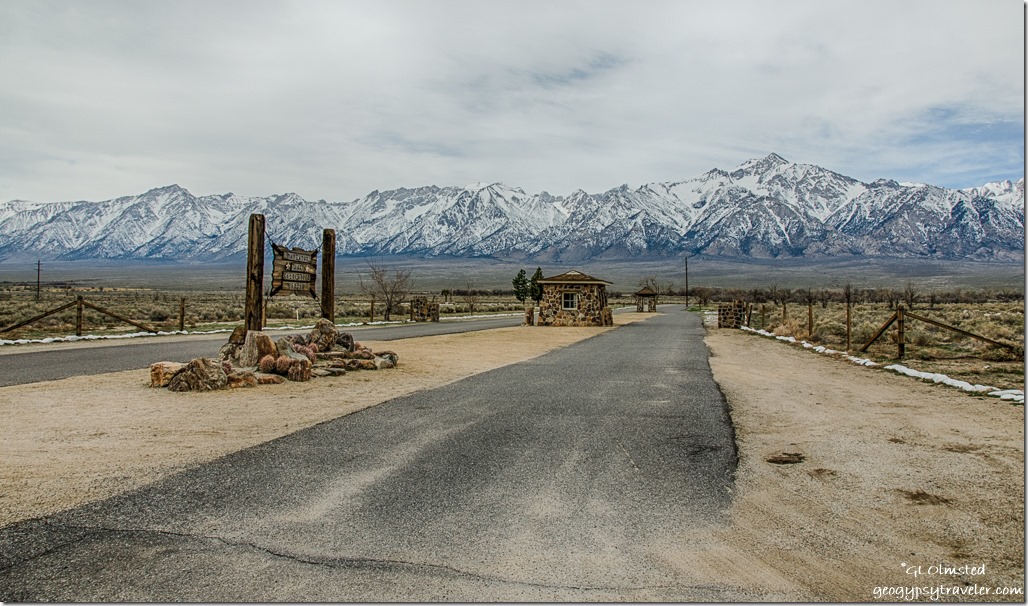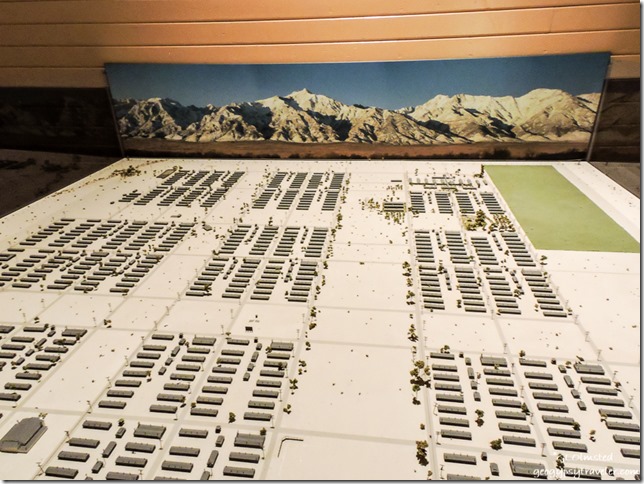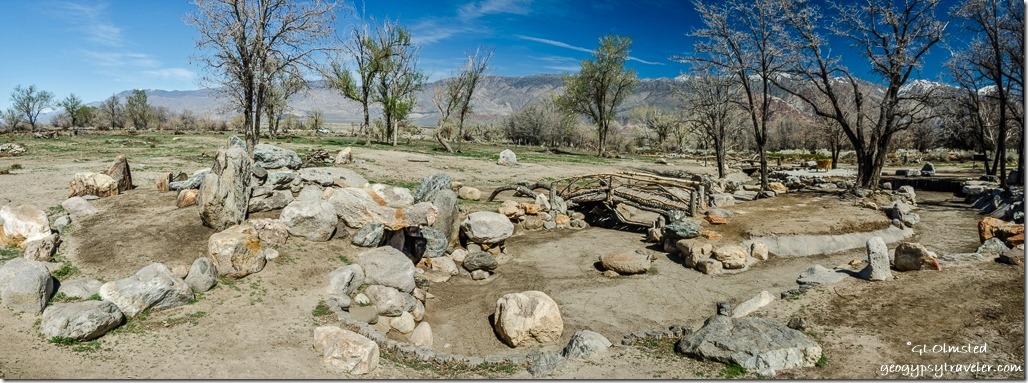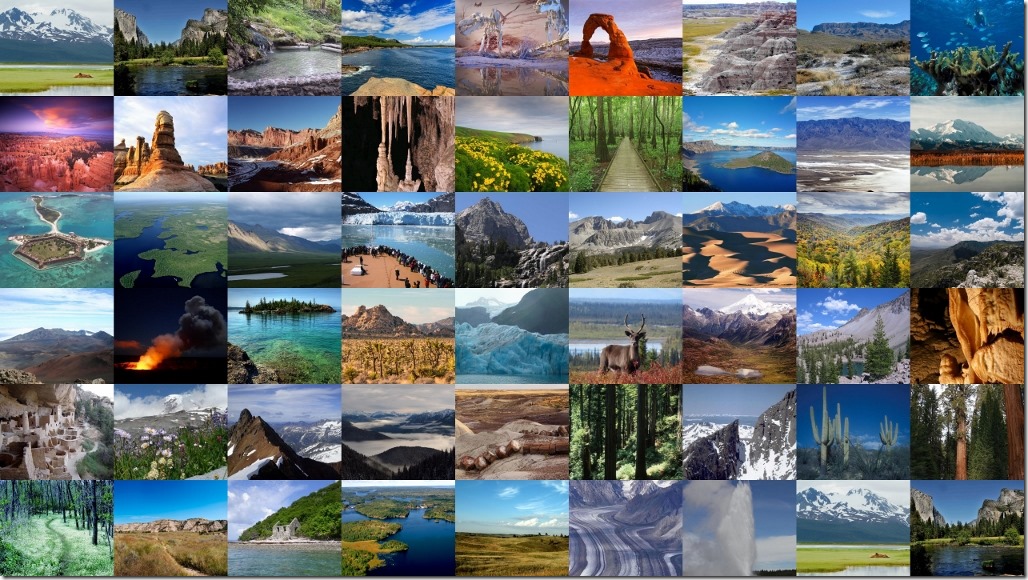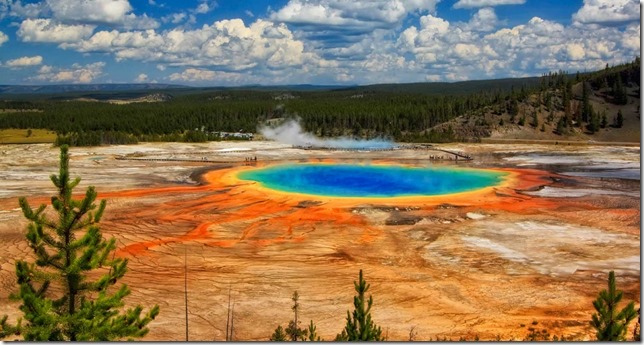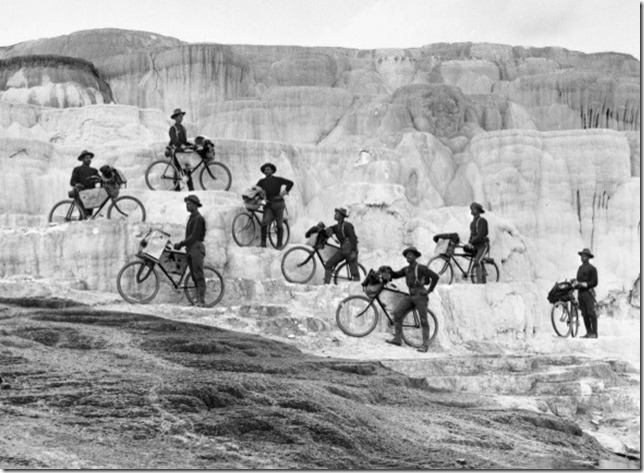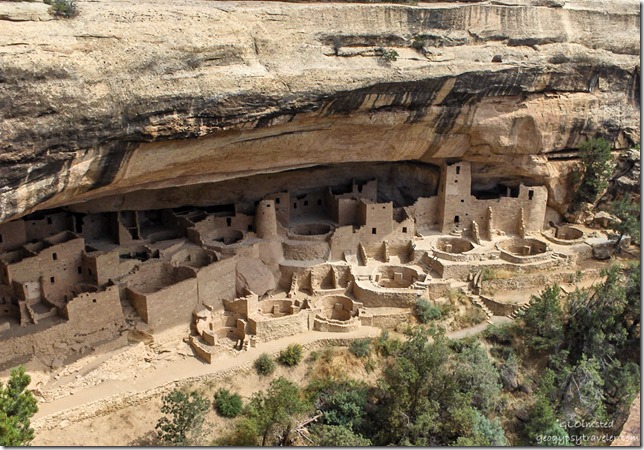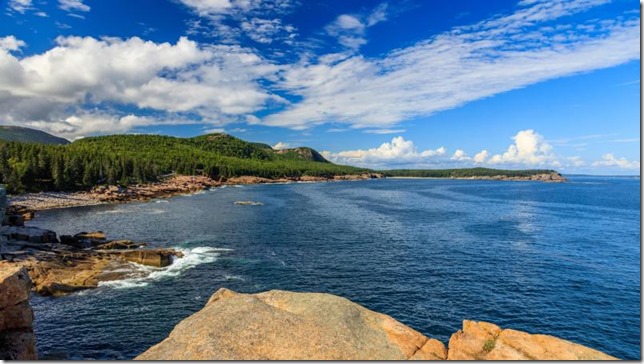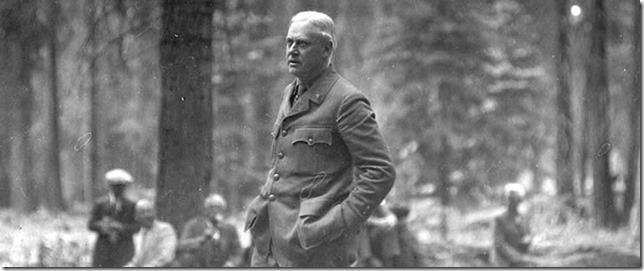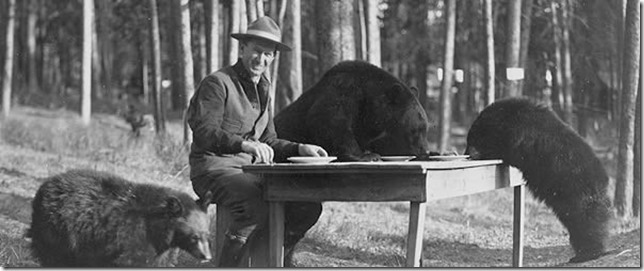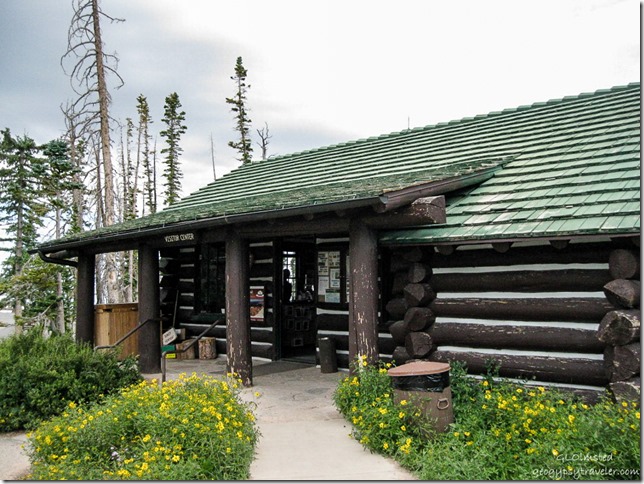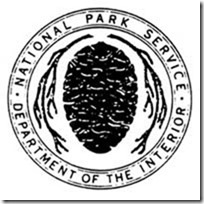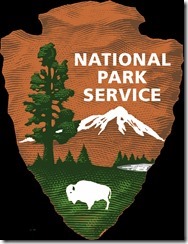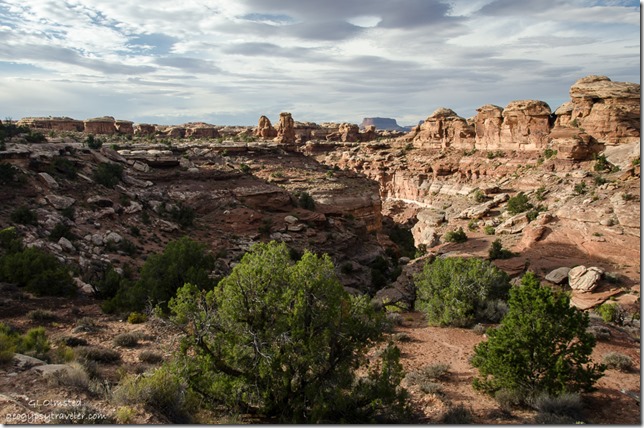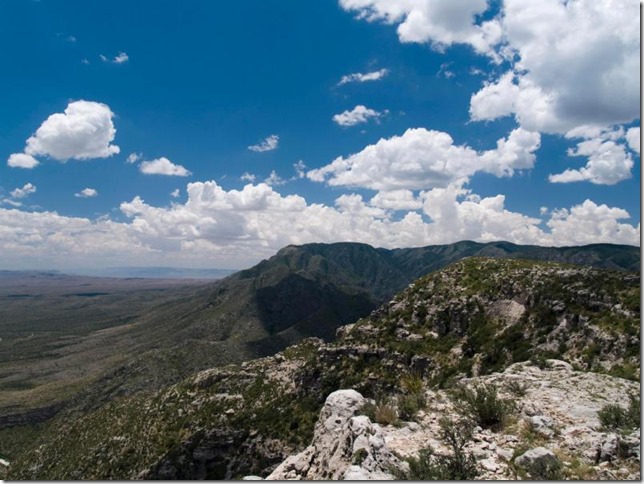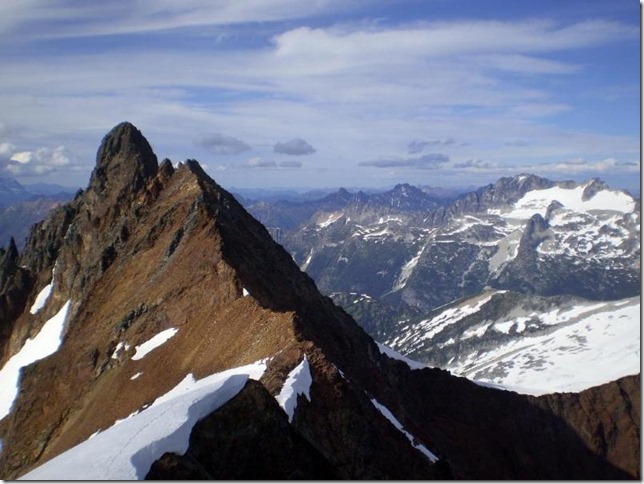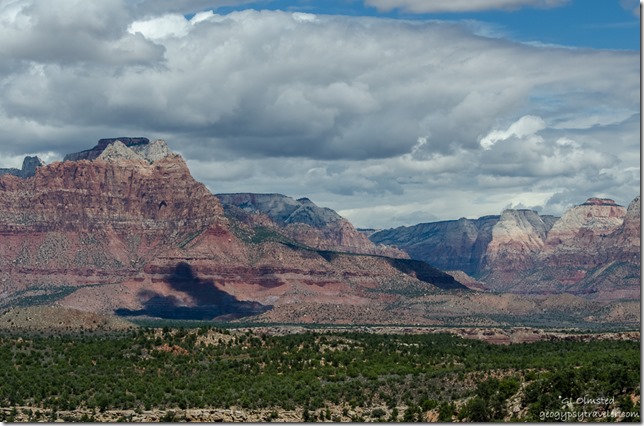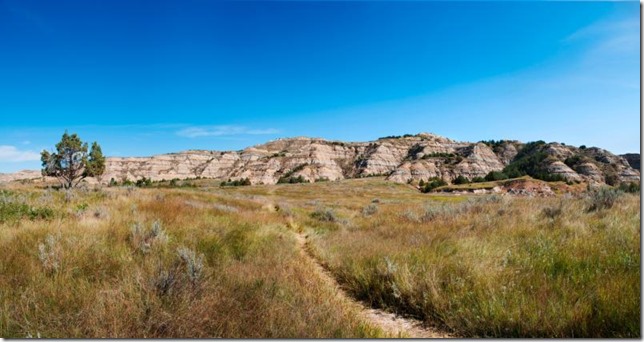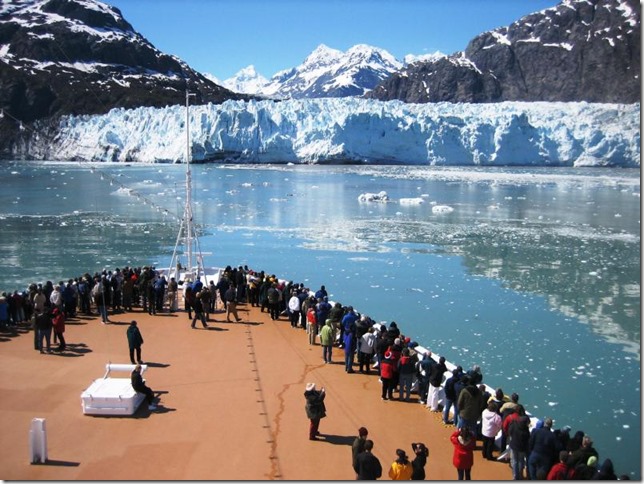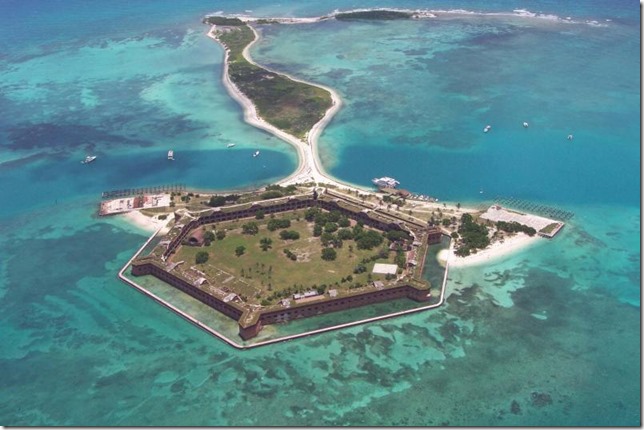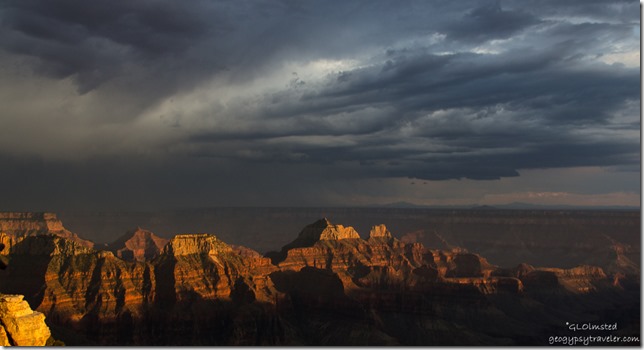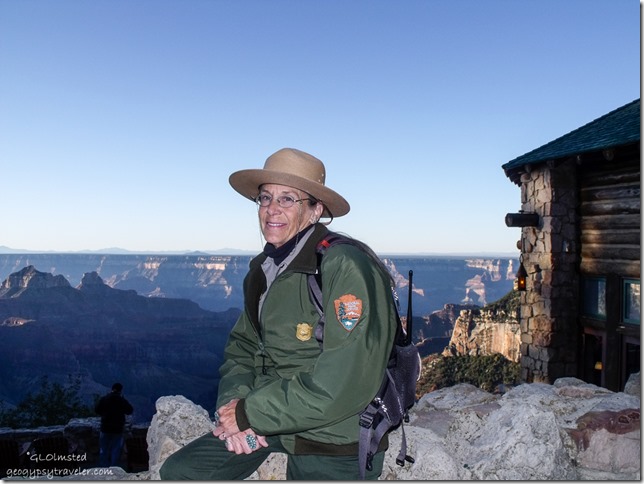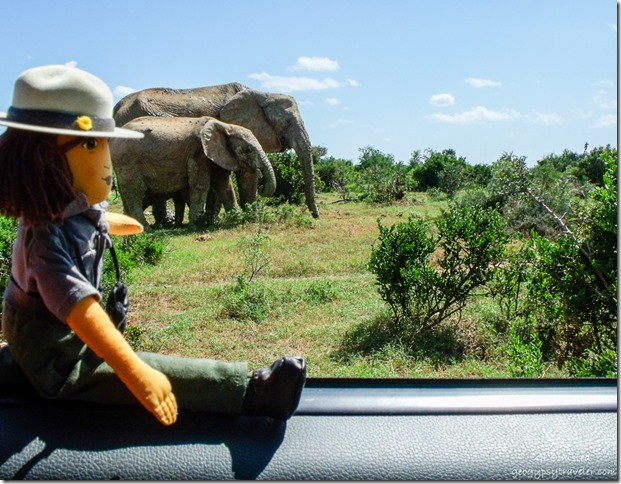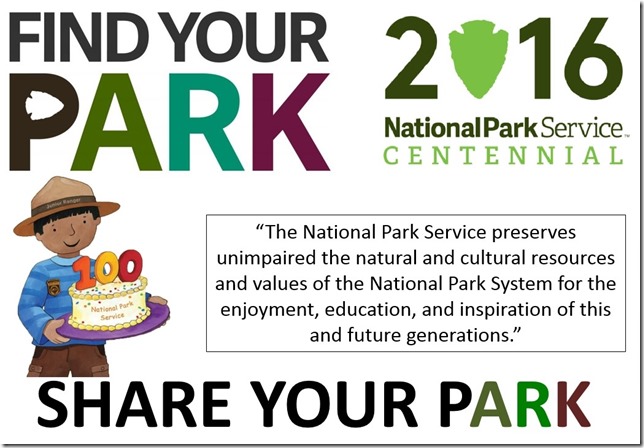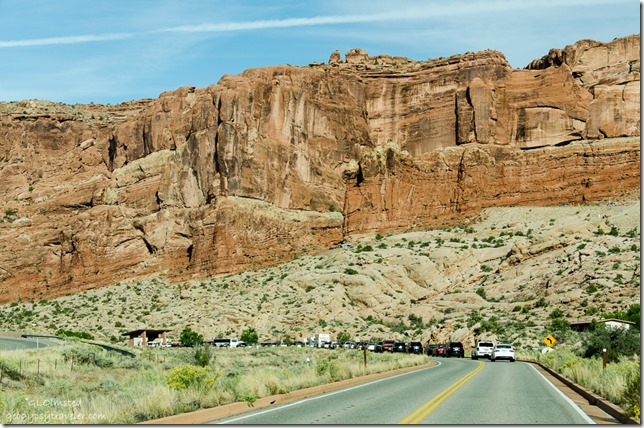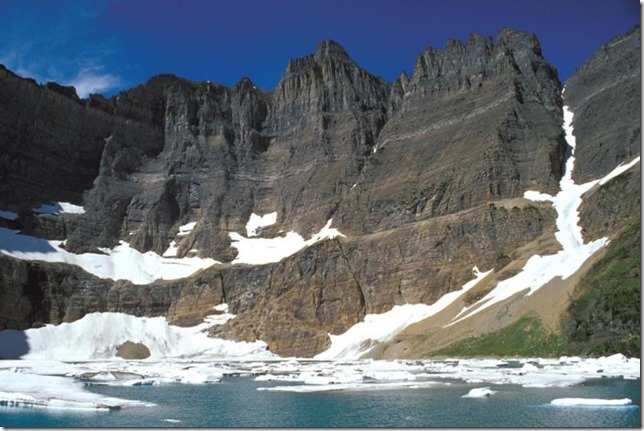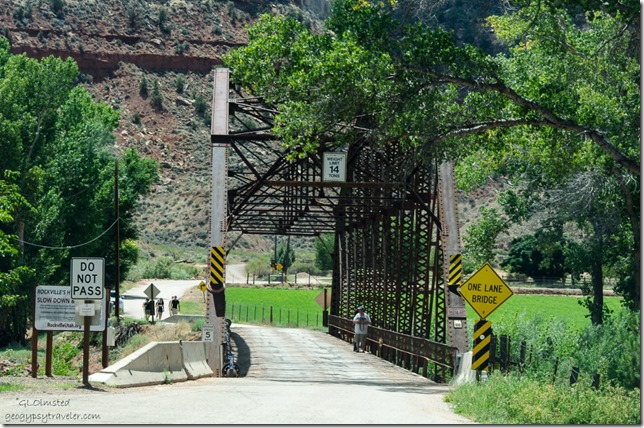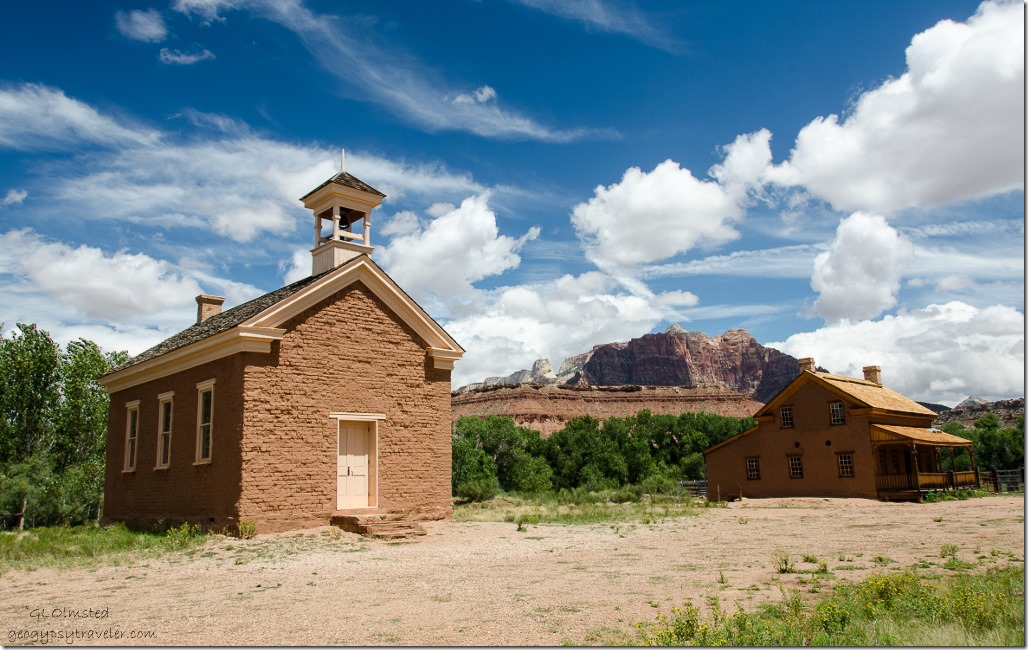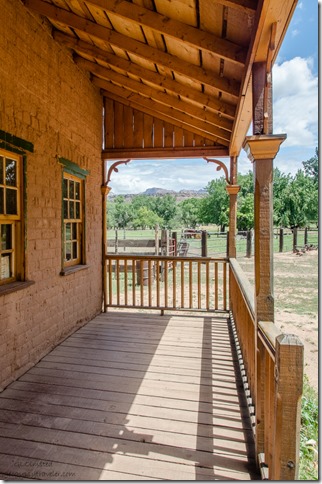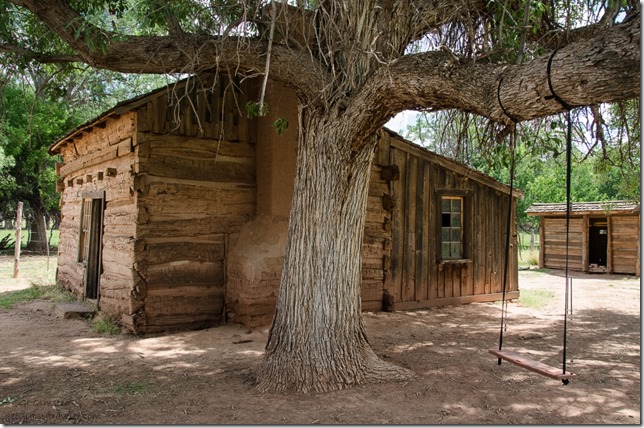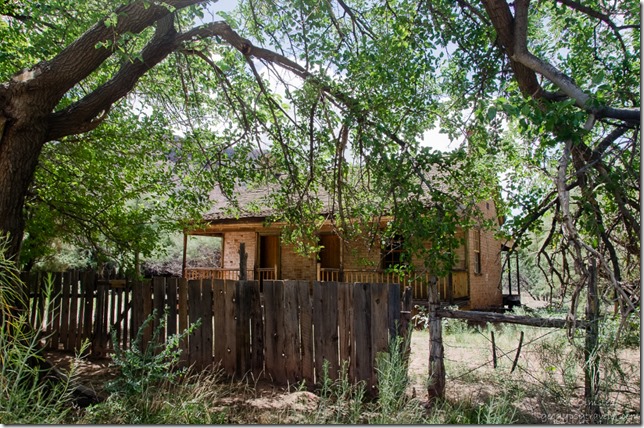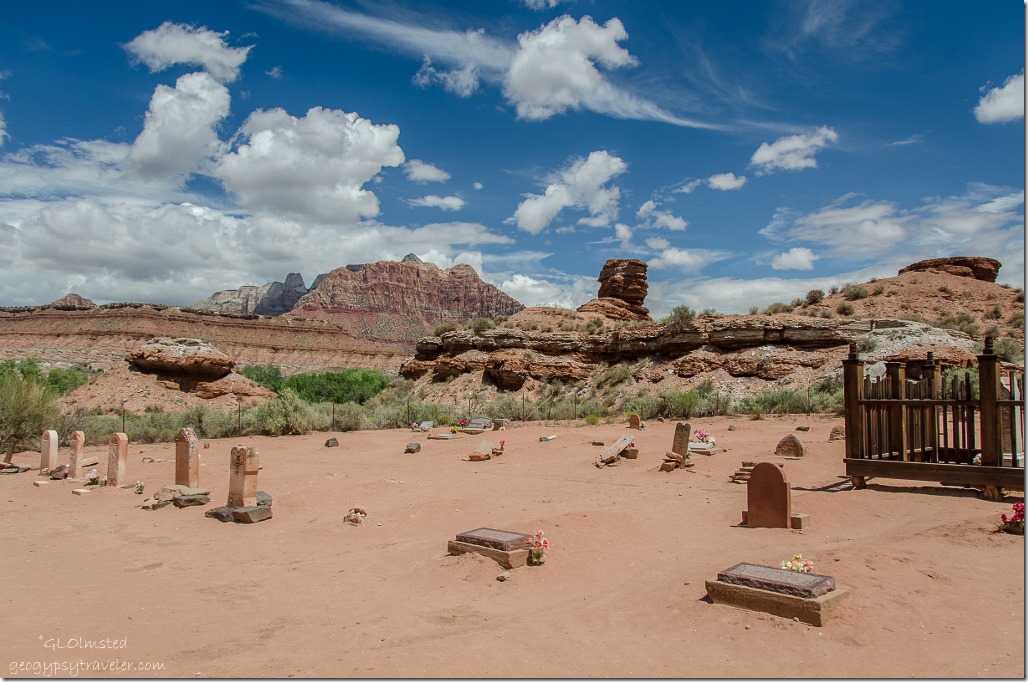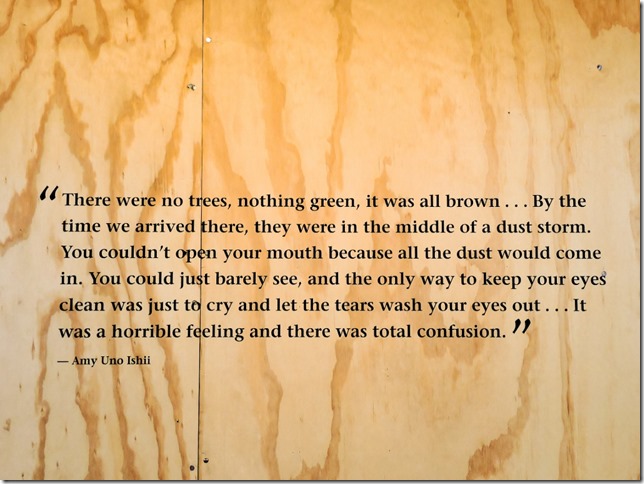 I’ve struggled writing about Manzanar, but I have much to say. Not only an inspiring history lesson but a look into my own soul. Manzanar National Historic Site took me by surprise. I was prepared to be sad, but instead felt disturbed that this could even happen, and inspired by a people who accepted their plight. Had someone told me to pack what I could carry and move, I’d have been kicking and screaming. Instead these quiet and accepting Japanese people did as they were told with very little dissent in an effort to show their patriotism. “Nani mo dekimasen” nothing can be done.
I’ve struggled writing about Manzanar, but I have much to say. Not only an inspiring history lesson but a look into my own soul. Manzanar National Historic Site took me by surprise. I was prepared to be sad, but instead felt disturbed that this could even happen, and inspired by a people who accepted their plight. Had someone told me to pack what I could carry and move, I’d have been kicking and screaming. Instead these quiet and accepting Japanese people did as they were told with very little dissent in an effort to show their patriotism. “Nani mo dekimasen” nothing can be done.
“I was put into a camp as an American citizen, which is against the Constitution because I had no due process…It was only because of my ancestry.” –Margaret Ichino Stanicci
Seems every wave of immigrants who move to America suffer through fear driven prejudice by many of our citizens who can probably trace their heritage to another land. Even before WWII, anti-Asian sentiment was strong and especially in the western states. Japan’s December 7, 1941, attack on Pearl Harbor intensified hostilities toward people of Japanese ancestry. Then on February 19, 1942, President Franklin D. Roosevelt authorized the military to remove “any or all persons” of Japanese ancestry living on the west coast to one of the ten War Relocation Centers. Ten thousand people were incarcerated at Manzanar, two-thirds of them were American citizens by birth. They traveled by train, bus and private car to their new home, the abandoned town site of Manzanar, California.
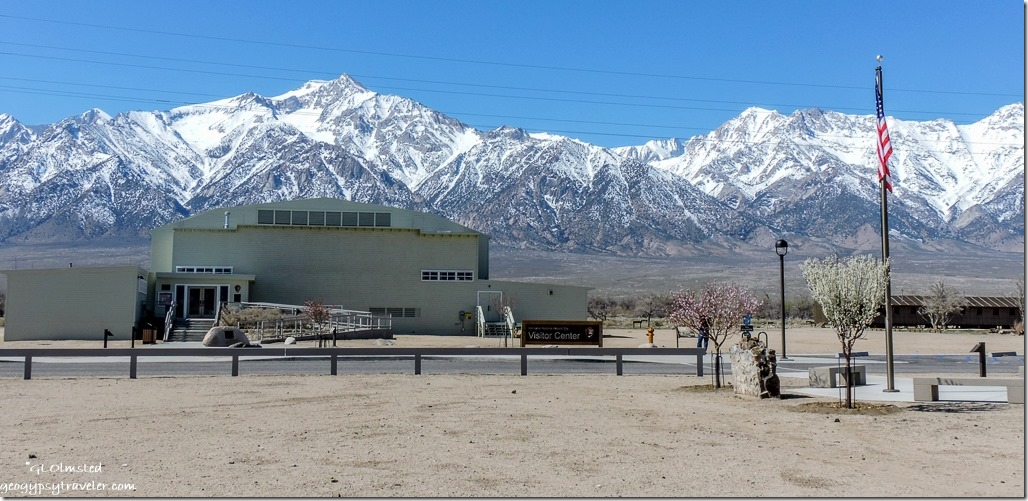 The Manzanar visitor center is located in the original gymnasium and one of the best I’ve seen. The National Park Service added an annex for information, theater, and sales where I received my Junior Ranger book, the hardest one I’ve ever done next to Joshua Tree for very different reasons. First watched the emotional 22-minute film, The Ides of Trump, which I highly recommend. Don’t think anyone walked out of that theater with a smile. Some, like myself, had tears in our eyes. I feel so ashamed that President Roosevelt made this decision on behalf of the American people even though we were engaged in war with Japan. I respect the 120,000 people who were incarcerated at all ten of the “retention centers” across the US with most in the west. I am disturbed thinking this could happen again.
The Manzanar visitor center is located in the original gymnasium and one of the best I’ve seen. The National Park Service added an annex for information, theater, and sales where I received my Junior Ranger book, the hardest one I’ve ever done next to Joshua Tree for very different reasons. First watched the emotional 22-minute film, The Ides of Trump, which I highly recommend. Don’t think anyone walked out of that theater with a smile. Some, like myself, had tears in our eyes. I feel so ashamed that President Roosevelt made this decision on behalf of the American people even though we were engaged in war with Japan. I respect the 120,000 people who were incarcerated at all ten of the “retention centers” across the US with most in the west. I am disturbed thinking this could happen again.
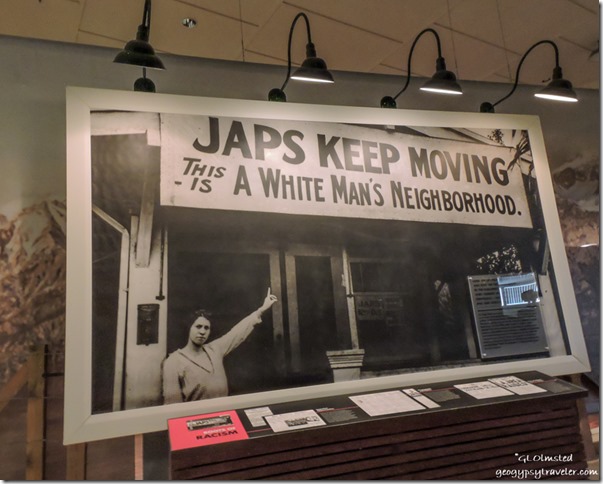 This huge image greeted me to the display room like a slap in the face. I wandered through the huge room which shared multiple sides of the story with the emphasis on the people who were born, lived, loved, worked, married, and died at Manzanar. I felt overwhelmed with an ache in my heart. I couldn’t read it all. Every display had a huge impact. I simply perused as each display worked deeper into my soul. Besides I wanted to drive the 3-mile self-guiding tour before closing at sunset and planned to return the next morning when the experience became even more moving.
This huge image greeted me to the display room like a slap in the face. I wandered through the huge room which shared multiple sides of the story with the emphasis on the people who were born, lived, loved, worked, married, and died at Manzanar. I felt overwhelmed with an ache in my heart. I couldn’t read it all. Every display had a huge impact. I simply perused as each display worked deeper into my soul. Besides I wanted to drive the 3-mile self-guiding tour before closing at sunset and planned to return the next morning when the experience became even more moving.
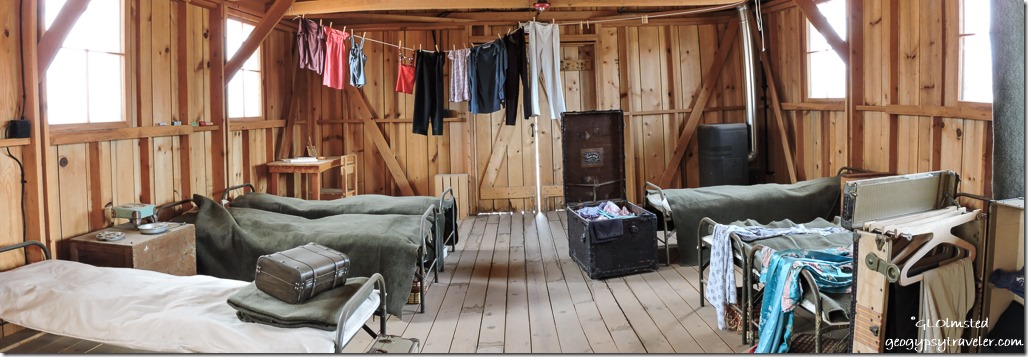 The landscape currently looks nothing like the community it became yet there is evidence from the past. The camp was built on land then owned by the Los Angeles Department of Water and Power and was arranged into 36 blocks with 14 barracks each that housed up to 300 people. Initially, each barracks had four 20×25’ rooms with eight people per room. An oil stove, a single hanging light bulb, cots, blankets, and mattresses filled with straw were the only furnishings provided. Everyone ate in a mess hall, washed clothes in a public laundry room, and shared latrines and showers with little privacy. Over time, people personalized their barracks and the blocks evolved into distinct communities. The 500-acre housing section was surrounded by barbed wire and eight guard towers with searchlights plus patrolled by military police. Outside the fence, military police housing, a reservoir, a sewage treatment plant, and agricultural fields occupied the remaining 5,500 acres. The original town of Manzanar, Spanish for apple orchard, was first developed as an agricultural community in the early 1900s with over 20,000 fruit trees. Before that native Paiutes lived here. The one thing all these people had in common was relocation.
The landscape currently looks nothing like the community it became yet there is evidence from the past. The camp was built on land then owned by the Los Angeles Department of Water and Power and was arranged into 36 blocks with 14 barracks each that housed up to 300 people. Initially, each barracks had four 20×25’ rooms with eight people per room. An oil stove, a single hanging light bulb, cots, blankets, and mattresses filled with straw were the only furnishings provided. Everyone ate in a mess hall, washed clothes in a public laundry room, and shared latrines and showers with little privacy. Over time, people personalized their barracks and the blocks evolved into distinct communities. The 500-acre housing section was surrounded by barbed wire and eight guard towers with searchlights plus patrolled by military police. Outside the fence, military police housing, a reservoir, a sewage treatment plant, and agricultural fields occupied the remaining 5,500 acres. The original town of Manzanar, Spanish for apple orchard, was first developed as an agricultural community in the early 1900s with over 20,000 fruit trees. Before that native Paiutes lived here. The one thing all these people had in common was relocation.
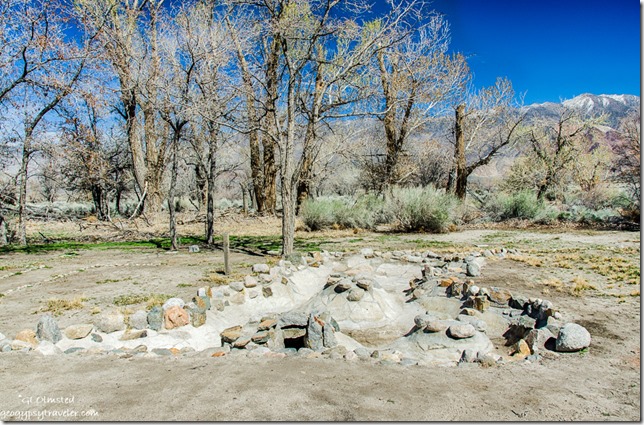 Seems the Japanese culture encourages living in nature, something we could all learn from, even in crowded environments gardens can provide that connection. Moved to a desolate desert scattered with sage brush at best after the scraping of the land to build housing, mess halls, hospital, laundry facilities, latrines, school, church, orphanage, and administrative buildings had to be a shock to everyone’s system. The wind blows more than frequently in the Owens Valley making for dust everywhere. Yet people still created gardens for pleasure with running water in pools and waterfalls. Stone lined paths. Anything to bring a sense of “normalcy” to their lives. Some were outside a families’ barracks, others were built for the community. The National Park Service is working on renovating some of the gardens and re-vegetation. I spoke to a park arborist at the Arai fish pond, a personal garden, and he said the pond may never have water but the plan is to replant the garden, “Anything is better than sagebrush.” Many of the huge old black locust and cottonwood trees are dying and being cut down. Yet new sprouts will turn to saplings and someday provide shade once again.
Seems the Japanese culture encourages living in nature, something we could all learn from, even in crowded environments gardens can provide that connection. Moved to a desolate desert scattered with sage brush at best after the scraping of the land to build housing, mess halls, hospital, laundry facilities, latrines, school, church, orphanage, and administrative buildings had to be a shock to everyone’s system. The wind blows more than frequently in the Owens Valley making for dust everywhere. Yet people still created gardens for pleasure with running water in pools and waterfalls. Stone lined paths. Anything to bring a sense of “normalcy” to their lives. Some were outside a families’ barracks, others were built for the community. The National Park Service is working on renovating some of the gardens and re-vegetation. I spoke to a park arborist at the Arai fish pond, a personal garden, and he said the pond may never have water but the plan is to replant the garden, “Anything is better than sagebrush.” Many of the huge old black locust and cottonwood trees are dying and being cut down. Yet new sprouts will turn to saplings and someday provide shade once again.
“You could face away from the barracks, look past a tiny rapids toward the darkening mountains, and for a while not be a prisoner at all. You could hang suspended in some odd, almost lovely land you could not escape from yet almost didn’t want to leave.” __Jeanne Wakatsuki Houston
I walked around Merritt Park, once an oasis of beauty and solitude for a crowded, confined community. Meandering paths and waterways, bridges, lawns, and flower gardens filled its 1.5 acres. I could hear children laughing, couples intimately whispering, a basketball game being organized. I didn’t take many photos, ignoring the camera ever hanging at my side. It almost felt intrusive. Yet now as I write this, I have the desire to return, looking at this physical display of history with different eyes.
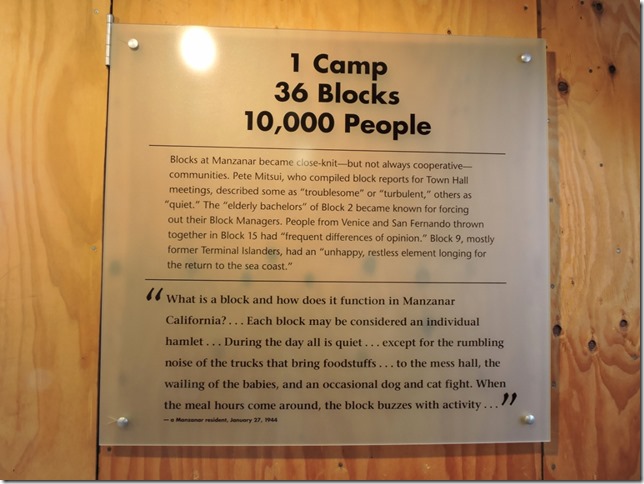 Manzanar was a community were life went on. The War Relocation Authority (WRA) formed an advisory council of internee-elected block managers. Internees established churches, temples, and boys and girls clubs. They developed sports, music, dance, and other recreational programs. Most internees worked in the camp. They dug irrigation canals and ditches, tended acres of fruits and vegetables, and raised chickens, hogs, and cattle. They served as mess hall workers, doctors, nurses, police officers, firefighters, and teachers. They made clothes and furniture for themselves and camouflage netting and experimental rubber for the military. Professionals were paid $19 per month, skilled workers received $16, and non-skilled workers got $12. Many pooled their resources and created a consumer cooperative that published the Manzanar Free Press and operated a general store, beauty parlor, barbershop, and bank.
Manzanar was a community were life went on. The War Relocation Authority (WRA) formed an advisory council of internee-elected block managers. Internees established churches, temples, and boys and girls clubs. They developed sports, music, dance, and other recreational programs. Most internees worked in the camp. They dug irrigation canals and ditches, tended acres of fruits and vegetables, and raised chickens, hogs, and cattle. They served as mess hall workers, doctors, nurses, police officers, firefighters, and teachers. They made clothes and furniture for themselves and camouflage netting and experimental rubber for the military. Professionals were paid $19 per month, skilled workers received $16, and non-skilled workers got $12. Many pooled their resources and created a consumer cooperative that published the Manzanar Free Press and operated a general store, beauty parlor, barbershop, and bank.
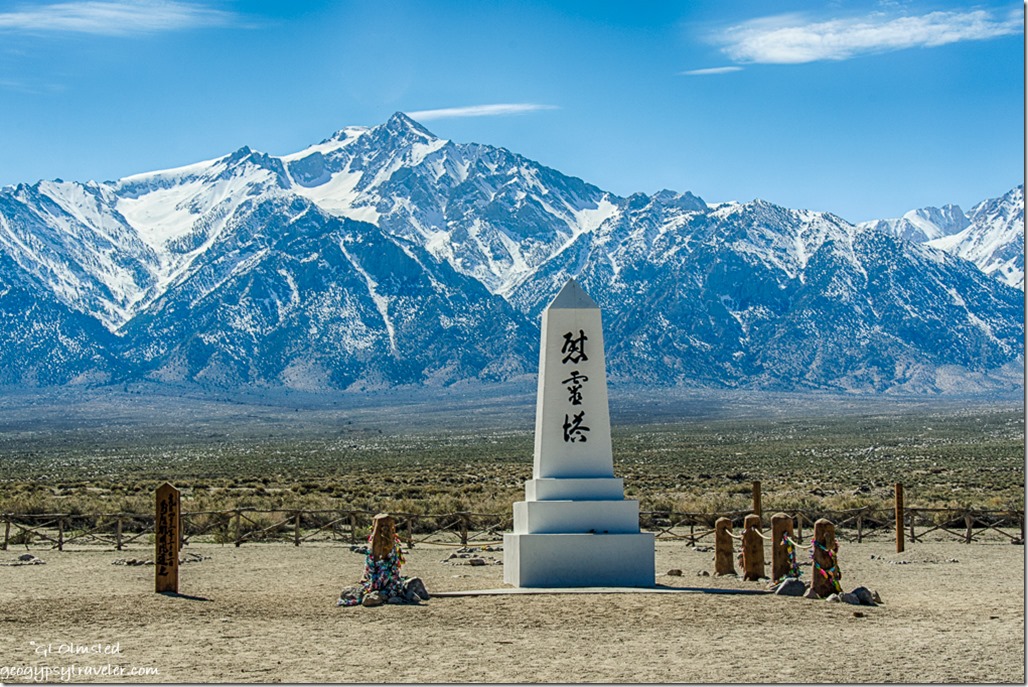 One hundred and fifty men, women, and children died in Manzanar. Fifteen were laid to rest in the cemetery outside the barbed wire fence in the shadow of Mt. Williamson. The Japanese characters read “Soul Consoling Tower”.
One hundred and fifty men, women, and children died in Manzanar. Fifteen were laid to rest in the cemetery outside the barbed wire fence in the shadow of Mt. Williamson. The Japanese characters read “Soul Consoling Tower”.
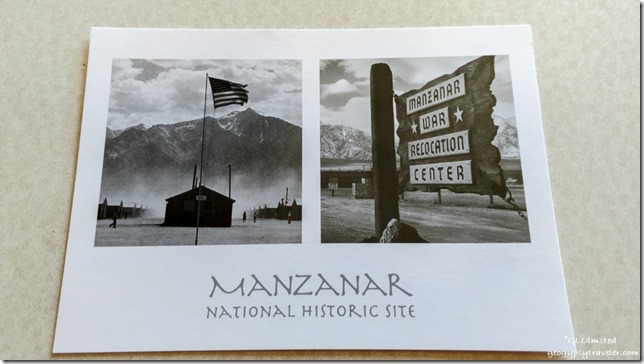 Being my first day’s visit was on March 15th, “The Ides of Trump”, a day activists were encouraged to send a postcard to #45 to show our concerns, I bought a postcard, wrote “Don’t Let This Happen Again” on the back, and mailed it from Independence, California. Then spent the night just outside of town at the Inyo County Independence campground.
Being my first day’s visit was on March 15th, “The Ides of Trump”, a day activists were encouraged to send a postcard to #45 to show our concerns, I bought a postcard, wrote “Don’t Let This Happen Again” on the back, and mailed it from Independence, California. Then spent the night just outside of town at the Inyo County Independence campground.
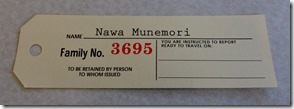 I returned the next day. Working on my Junior Ranger book required that I actually read more of the display signs. Before people were sent to Manzanar, and other camps, each family was assigned a number and given tags. I took a tag then walked through the displays discovering more about Nawa Munemori. Nawa was born in Japan and arrived to Manzanar with three of her five grown children. She hung an American flag in the window daily, until her son who fought in Italy died along with a bit of herself.
I returned the next day. Working on my Junior Ranger book required that I actually read more of the display signs. Before people were sent to Manzanar, and other camps, each family was assigned a number and given tags. I took a tag then walked through the displays discovering more about Nawa Munemori. Nawa was born in Japan and arrived to Manzanar with three of her five grown children. She hung an American flag in the window daily, until her son who fought in Italy died along with a bit of herself. 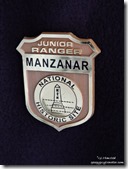
Yes, I did work hard learning to earn my Junior Ranger badge. Plus enjoyed an educational discussion with both a Ranger and a young woman interning from the Student Conservation Association. Sure would like to see more national park sites offering a “Not so Junior Ranger” program to kick the learning curve up a notch or two.
 Next I walked through the two reconstructed barracks. A man of possible Asian decent with his two children had just walked out of #2 onto the basketball court. The boy found a bin of basketballs and joyfully began to shoot for the hoop. Had I just transported in time? I wondered if this family visited Manzanar in tribute to ancestors. His enthusiasm was contagious as I felt my first smile since visiting this tragic place.
Next I walked through the two reconstructed barracks. A man of possible Asian decent with his two children had just walked out of #2 onto the basketball court. The boy found a bin of basketballs and joyfully began to shoot for the hoop. Had I just transported in time? I wondered if this family visited Manzanar in tribute to ancestors. His enthusiasm was contagious as I felt my first smile since visiting this tragic place.
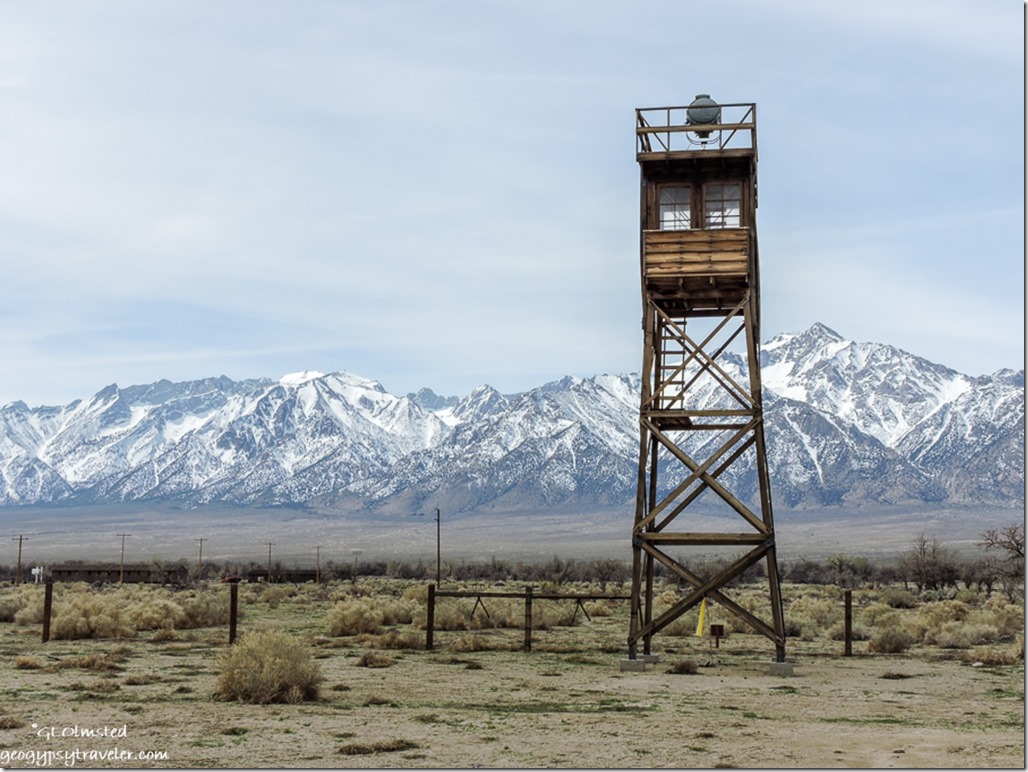 The Manzanar camp closed on November 21, 1945, three months after the war ended. Yet despite freedom, many internees took decades to rebuild their lives and rarely spoke about the experience. The government removed most of the structures burying the gardens. Nature began to take over. Beginning in 1969, a group of activists lead by Sue Kunitomi Embrey who had lived in Manzanar, formed the Manzanar Committee which pushed for the creation of Manzanar National Historic Site established in 1992. Yet in the 1980s this mistake was recognized by a Congressional authorized commission concluding that “race prejudice, war hysteria and a failure of political leadership” led to this incarceration. Between 1990 and 1999, the US government issued over 82,000 apology letters and redress payments to Japanese Americans.
The Manzanar camp closed on November 21, 1945, three months after the war ended. Yet despite freedom, many internees took decades to rebuild their lives and rarely spoke about the experience. The government removed most of the structures burying the gardens. Nature began to take over. Beginning in 1969, a group of activists lead by Sue Kunitomi Embrey who had lived in Manzanar, formed the Manzanar Committee which pushed for the creation of Manzanar National Historic Site established in 1992. Yet in the 1980s this mistake was recognized by a Congressional authorized commission concluding that “race prejudice, war hysteria and a failure of political leadership” led to this incarceration. Between 1990 and 1999, the US government issued over 82,000 apology letters and redress payments to Japanese Americans.
“I have come to a conclusion after many, many years that we must learn from our history and we must learn that history can teach us how to care for one another.” –Rose Hanawa Tanaka
Let us hope a lesson can be learned from places like Manzanar and not ever let this happen again.
To see what life looked like in Manzanar check out these photos by Ansel Adams in 1943.

